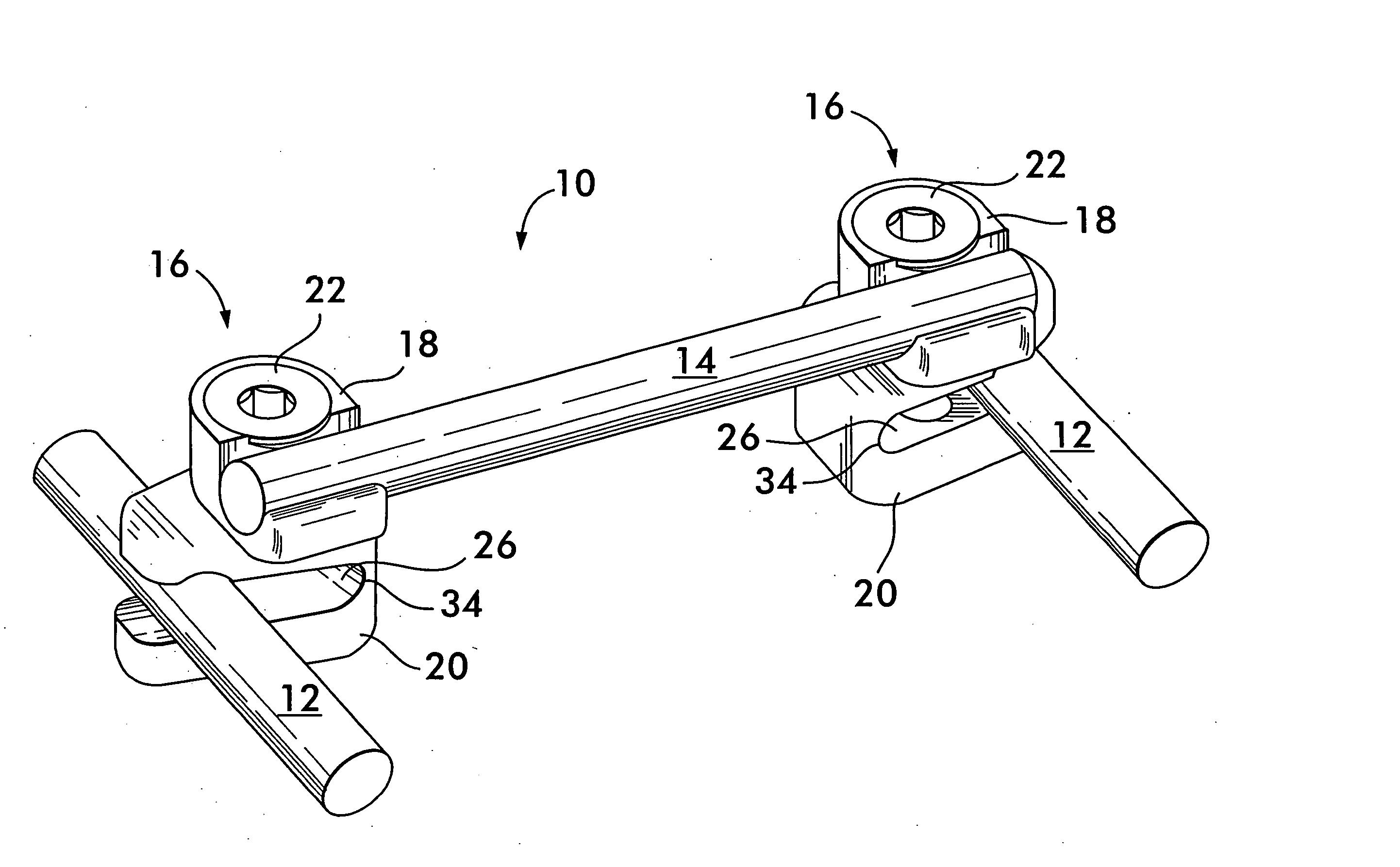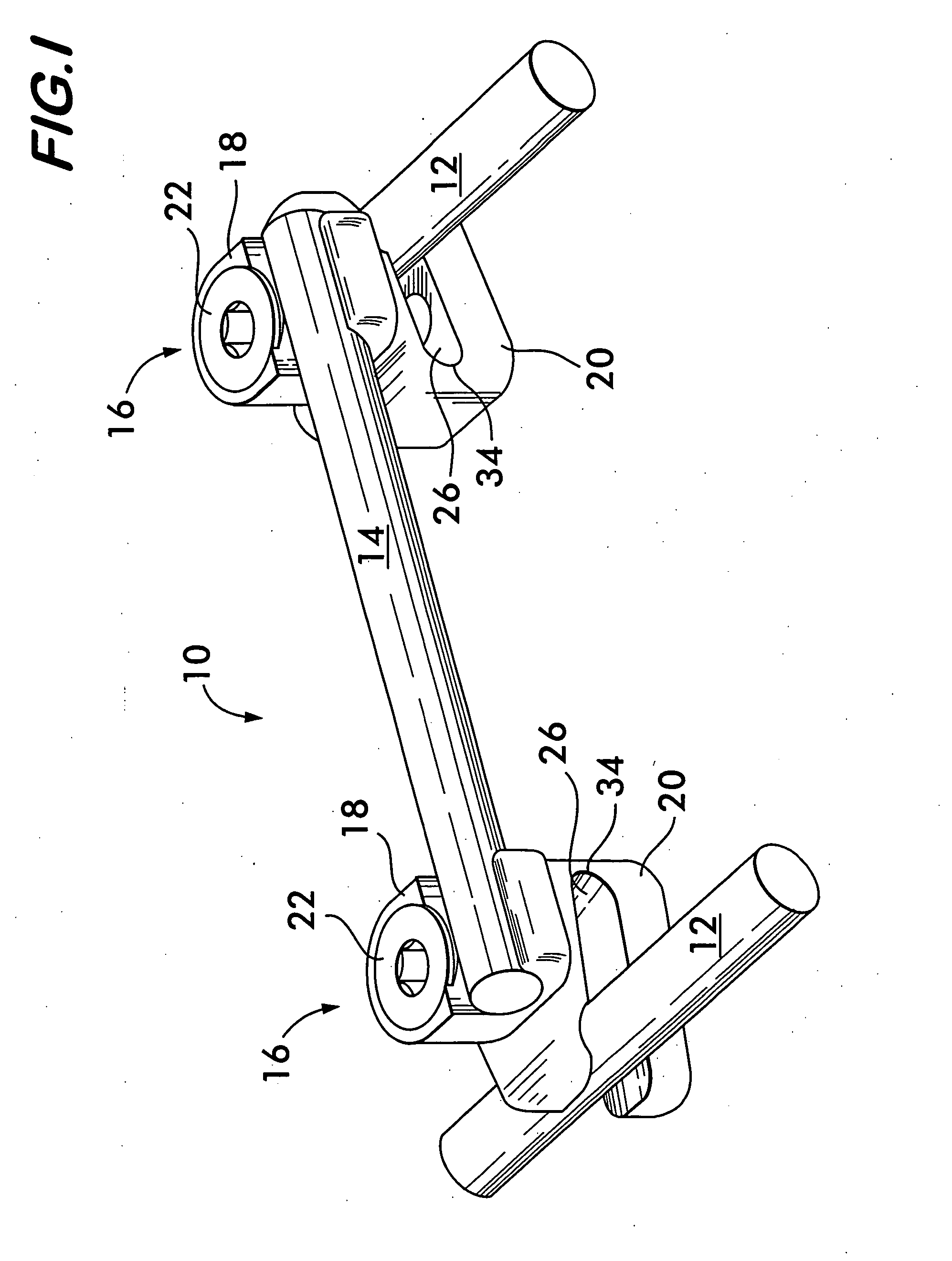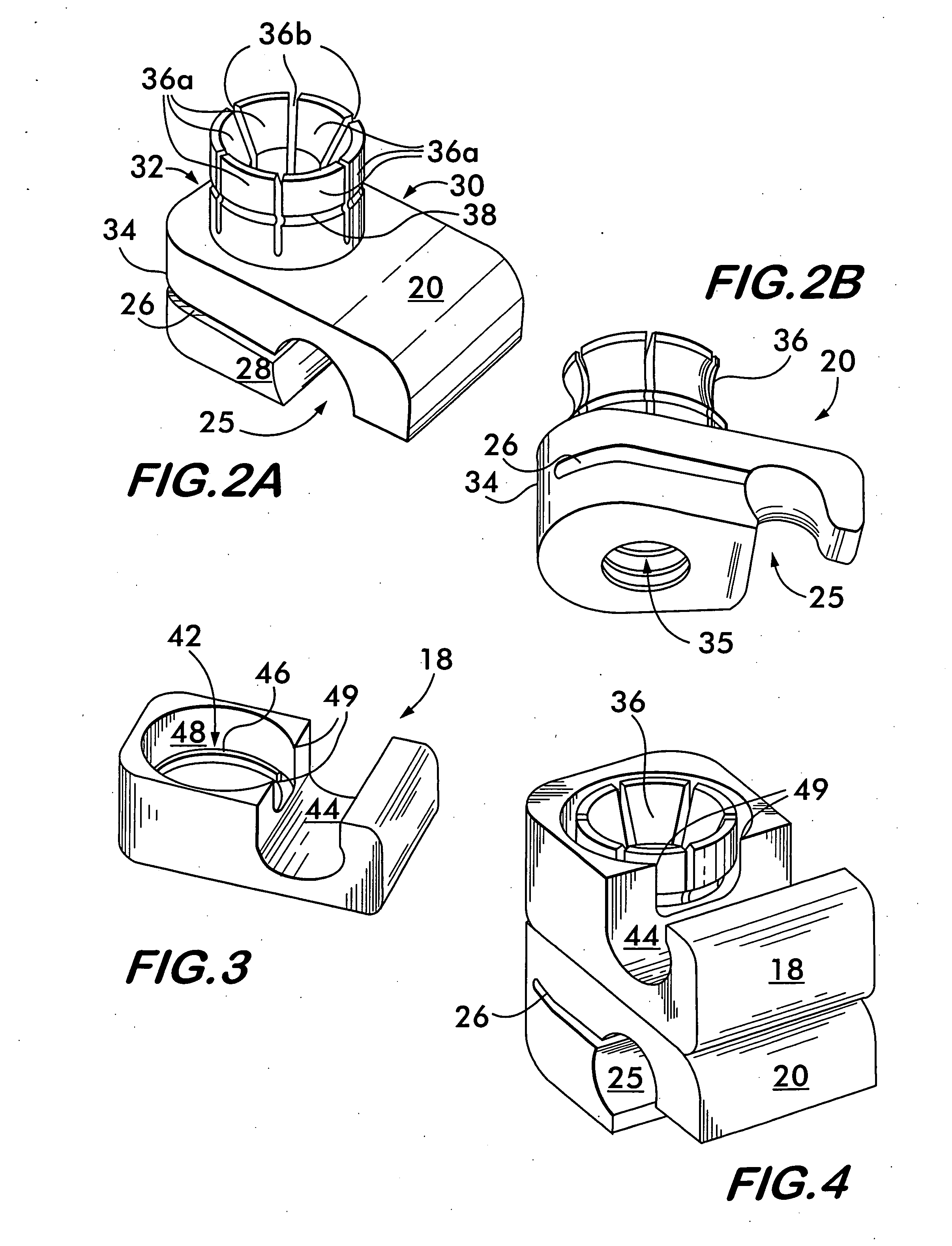Rod to rod connector
- Summary
- Abstract
- Description
- Claims
- Application Information
AI Technical Summary
Benefits of technology
Problems solved by technology
Method used
Image
Examples
Embodiment Construction
[0035]FIG. 1 is a perspective view of a rod to rod connector 10 in accordance with the present invention interconnecting two generally parallel spinal rods 12. The connector 10 comprises a transverse rod 14 and a pair of clamping assemblies 16. Each clamping assembly 16 comprises an upper clamping member 18 and a lower clamping member 20. Preferably, to two upper clamping members 18 are identical to each other and the two lower clamping members 20 are identical to each other. Each clamping assembly 16 further comprises a screw 22. The clamping members 18 and 20 preferably are made of a biocompatible, resilient material such as titanium, stainless steel, or any number of biocompatible polymers.
[0036]FIGS. 2A and 2B are upper and lower perspective views of a lower clamping member 20. It comprises a C-shaped spinal rod receiving channel 25 sized to accept a spinal rod 12. A slot 26 that runs the full depth of the clamping member 20 from the front side walls 28 to the rear sidewall 30 ...
PUM
 Login to View More
Login to View More Abstract
Description
Claims
Application Information
 Login to View More
Login to View More - R&D
- Intellectual Property
- Life Sciences
- Materials
- Tech Scout
- Unparalleled Data Quality
- Higher Quality Content
- 60% Fewer Hallucinations
Browse by: Latest US Patents, China's latest patents, Technical Efficacy Thesaurus, Application Domain, Technology Topic, Popular Technical Reports.
© 2025 PatSnap. All rights reserved.Legal|Privacy policy|Modern Slavery Act Transparency Statement|Sitemap|About US| Contact US: help@patsnap.com



